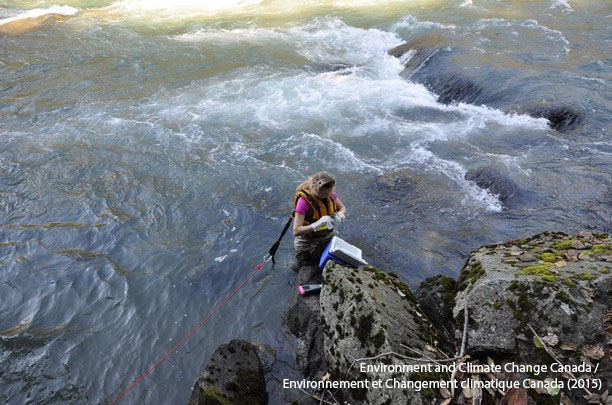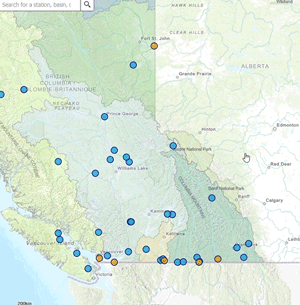Water Quality Monitoring Activities

British Columbia and Canada jointly conduct water monitoring in the province. We monitor water quality at 48 stations on 36 rivers.
Water Quality Parameters
We collect water samples every two weeks or every month from each station and analyse them for a range of water quality parameters. We define a set of core parameters for every station including metals, nitrogen, phosphorus, turbidity, specific conductance, hardness, suspended sediment, colour, organic carbon, calcium, magnesium, silicon, potassium and temperature. This allows us to compare the data between stations. We also add other parameters if there are specific issues in the watershed.
Sampling Strategy
Provincial and federal government staff, First Nations and private contractors collect water samples for this program. Water sampling procedures are standardized and we provide training to anyone new to the program. We also audit everyone's sampling technique each year.
Grab samples are collected from under the surface of the water by wading into the river or by lowering a multi-sampler into the river from a bridge. Replicate and field blank samples are collected at each station two to three times per year for quality assurance.
Water Quality Data
We use the data from the network to:
- track current water quality conditions of rivers;
- see if those conditions are changing over time;
- detect emerging issues that may threaten aquatic life;
- support the development of evidence-based guidelines for water, fish, and sediment;
- track the results of remedial measures and regulatory decisions; and,
- further improve the network using a risk-based adaptive management approach
Water Quality Trends
Pollution from urban, industrial and agricultural areas poses a threat to water quality and aquatic life. We assessed data from the Network for trends from 2005 to 2014 to see if water quality is changing over time.
Stations in the Fraser and Columbia River basins have been assessed. We will be adding assessments for the remaining stations in the future. Access the station trend reports here.
Use our interactive map to explore monitoring stations in the Canada-B.C. Water Quality Monitoring Program.
Guidelines
Other Useful Resources
Contact information

For more information about the Canada-B.C. Water Quality Monitoring Program email the water quality scientists at:

